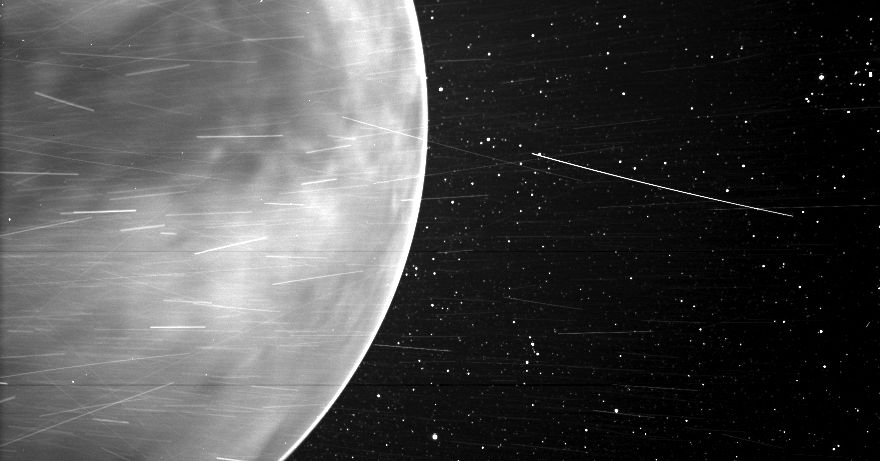Sun probe surprises NASA with incredible photo of Venus
Source: The Verge added 25th Feb 2021The Parker Solar Probe, NASA’s closest eye on the Sun, was whizzing by Venus last summer for a gravity assist when it snapped a striking new image of the planet’s mysterious nightside, revealing a surprisingly clear view of the Venusian surface.
The spacecraft, launched in 2018, is in the midst of its seven-year journey to study the Sun from 4 million miles away, the closest any human-made object has gone before. To do this, Parker Solar Probe needs to use the gravity of Venus to help tighten its orbit around the Sun through a series of seven flybys, nudging itself closer to the star with each pass.
Those scenic passes are valuable opportunities to catch intriguing shots of Venus.
The image taken by Parker Solar Probe’s Wide-field Imager (WISPR) came during its third Venus flyby in July 2020, and scientists were shocked. They expected WISPR to capture Venus’ thick, carbon dioxide-rich clouds that usually obstruct views of the surface. But instead, the camera was able see through the clouds and reveal the dark-tinted shape of Aphrodite Terra, an elevated area of Venus near its equator that scientists say is about 85°F cooler than its surroundings.
“WISPR effectively captured the thermal emission of the Venusian surface,” Brian Wood, an astrophysicist and WISPR scientist at the US Naval Research Laboratory in Washington, DC, said in a NASA statement. Wood noted the image was similar to those taken by a Japanese Venus probe currently analyzing Venus that can capture light at near-infrared wavelengths.
The revelation could mean one of two things.
WISPR might’ve shown off an unexpected capability for sensing infrared light, which, if true, could unlock a new potential for scientists to study dust circling the Sun. “This surprising observation sent the WISPR team back to the lab to measure the instrument’s sensitivity to infrared light,” Michael Buckley, communications manager at Johns Hopkins Applied Physics Laboratory, wrote in a NASA blog post.
But if that’s not the case, then the appearance of Aphrodite Terra could mean WISPR discovered a previously unknown opening in the thick Venusian clouds, a “window” revealing portions of the planet’s surface.
To find out, mission teams scheduled more nightside shots of Venus in its latest flyby last weekend. They plan to release more images and an analysis by late April.
WISPR’s image revealed other fascinating traits of Venus. It detected a glowing rim in the planet’s upper atmosphere that scientists suspect could be “nightglow.” Exclusive to Venus’ nightside, the faint luminescence might be caused by a clash of oxygen and nitrogen atoms that come from the side of the planet exposed to the Sun.
Scientists are still studying the exact cause of the wispy streaks of light darting across the image’s frame, the NASA post said. They could be charged particles called cosmic rays, tiny grains of space dust reflecting sunlight or “particles of material expelled from the spacecraft’s structures after impact with those dust grains.”
brands: Area Carbon Cooler DC Gravity It Key Million New One Orbit other Planet Reveal Shape Space STAR SUN Team Terra UNKNOWN Venus WAS media: 'The Verge' keywords: NASA
Related posts
Notice: Undefined variable: all_related in /var/www/vhosts/rondea.com/httpdocs/wp-content/themes/rondea-2-0/single-article.php on line 88
Notice: Undefined variable: all_related in /var/www/vhosts/rondea.com/httpdocs/wp-content/themes/rondea-2-0/single-article.php on line 88
Related Products
Notice: Undefined variable: all_related in /var/www/vhosts/rondea.com/httpdocs/wp-content/themes/rondea-2-0/single-article.php on line 91
Warning: Invalid argument supplied for foreach() in /var/www/vhosts/rondea.com/httpdocs/wp-content/themes/rondea-2-0/single-article.php on line 91
